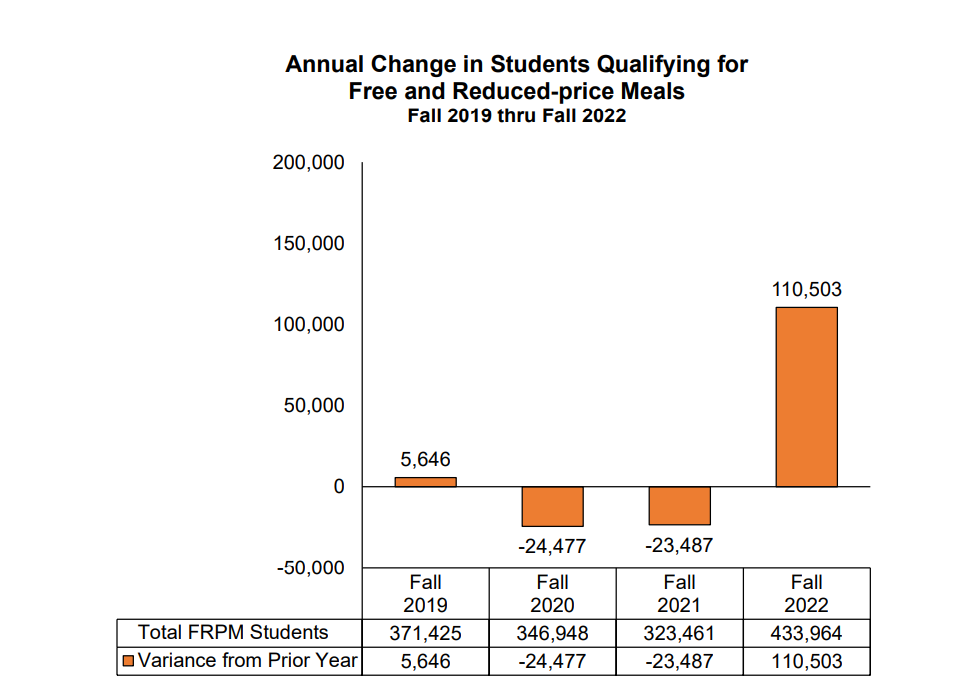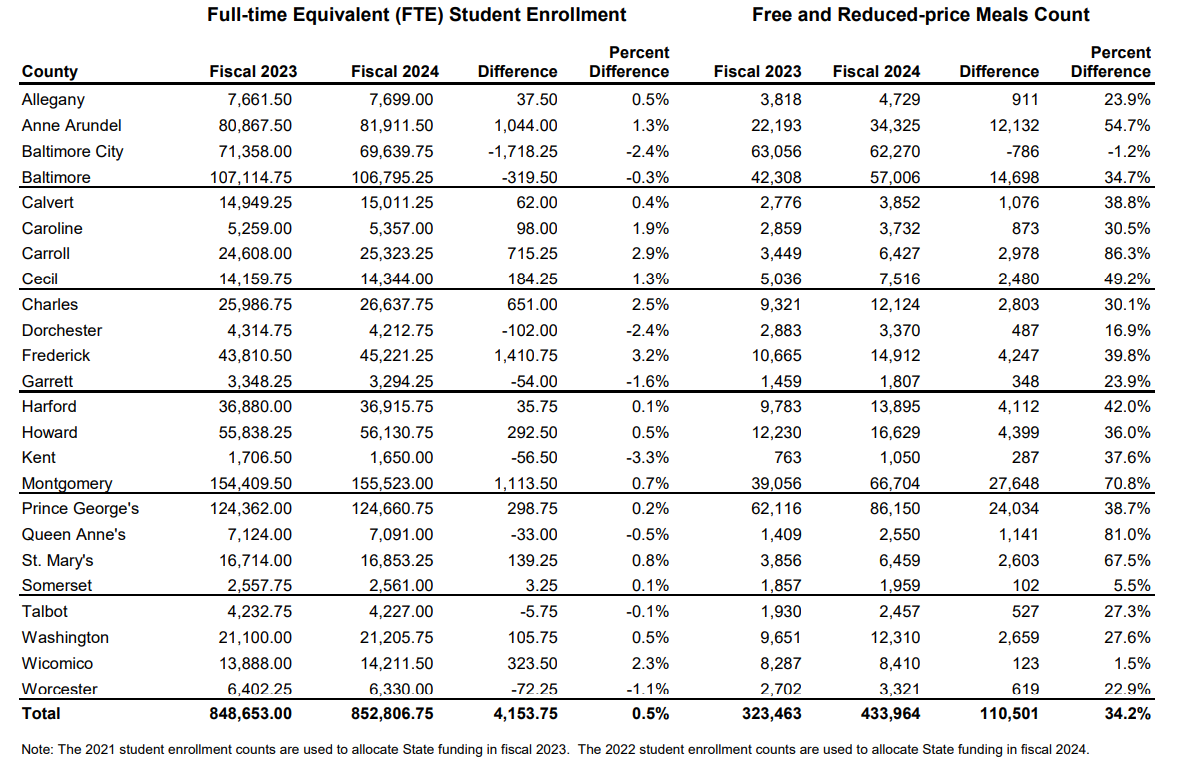Improved Eligibility Method Leads to Sharp Increase in Students Qualifying for Free School Meals
State budget documents revealed a sharp increase in the number of public school students qualifying for free and reduced-price school meals after the state changed the method it uses to determine eligibility. More than 110,000 students in Maryland’s public schools qualified for free and reduced-price meals when the school year began last fall. – a 34% increase from the previous year. This measure is important not only for ensuring students from low-income families are able to get food at school so they are well prepared to learn, but also because this figure is used as a measurement of poverty in a given school in the school funding formula.

Source: Department of Legislative Services, Office of Policy Analysis. Fiscal Briefing. January 25, 2023
Every jurisdiction, except Baltimore City (-1.2%), Wicomico County (1.5%) and Somerset County (5.5%), saw a significant percent increase in the number students enrolled for free and reduced-price meals. Some of the most significant enrollment increases were in Carroll County (86.3%), Queen Anne’s County (81%), Montgomery County (70.8%), St Mary’s County (67.5%) and Anne Arundel County (54.7%). The three counties with negative or low percent increase are counties which have historically had a high number of students eligible for free and reduced-price meals.

Source: Department of Legislative Services, Office of Policy Analysis. Fiscal Briefing. January 25, 2023
The increase in students enrolled in free meals is a result of a change in how schools determine eligibility – that is, it is not the case that a significant number of students became newly eligible. Rather, school districts are now doing a better job of identifying students in need.
The Blueprint for Maryland’s Future education legislation passed in 2021 required Medicaid as a matching element to directly certify children for free meal eligibility. In late 2021, the United States Department of Agriculture (USDA) announced that children in Maryland on Medicaid health insurance will automatically be enrolled into their schools’ free and reduced-price meal programs, making Maryland currently one of 39 states in the country adopting this method. For the first time, in determining qualification for Free and Reduced-price meals, Maryland is looking at the number of students enrolled in school who are also signed up for Medicaid, along with matching data to students enrolled in other safety net programs like the Supplemental Nutrition Assistance Program (SNAP), which Maryland was already doing.
The result is that now the state is able to identify and get a more accurate accounting of the number of low-income households who are eligible for free and reduced-priced school meals. In past years, enrollment in the program often relied on families completing a form to demonstrate eligibility. Direct certification using Medicaid data is limited to children who are members of households whose income that does not exceed the National School Lunch Program income standards for free school meal eligibility of 130% of the Federal Poverty Level for family size used by Medicaid and 185% of for reduced price school meal eligibility.
This is significant not only because direct certification reduces the paperwork parents have to do for their children to be eligible for school meals, but it also ensures that no child who is eligible is mistakenly left behind. Direct certification through Medicaid increases access to nutritious school meals for low-income students, substantially reduces school meal certification errors and has been found to be fiscally responsible at the school district, state and federal levels.
As Governor Wes Moore begins his first term, he has repeatedly highlighted ending childhood poverty as a top priority, and a range of proposed legislation this session would help advance that goal.
One proposal, Healthy School Meals for All, would build on the success of the prior two school years when schools provided free meals for every student, regardless of income. This removes stigma around free school meals and ensures no children go hungry at school. While the new eligibility method is a significant improvement, it will still miss some children whose families might be struggling but not eligible for the federal programs for various reasons.
The proposed legislation would require public and private schools that serve breakfast and lunch to provide all of its students breakfast and lunch that meets the requirements of the Federal National School Breakfast and Lunch Programs at no cost to the student. To cover the cost the state would provide funding to the public or private school equal to the difference between the federal and state reimbursement and the USDA cost for free breakfast and free lunch for each student not eligible for a free or reduced-price school breakfast and lunch who are receiving breakfast and lunch at school.

